QuestionI am about to receive a 7 week old Siberian Husky and wanted to get some information on the food that it will eat. Could you give me a schedule to follow when he is a pup and when he is an adult. Also could you give me some name brands of food that Siberian Huskies eat.
AnswerA dog, especially a puppy, has a rather sensitive stomach. Your best bet as far as initial feeding is to talk to the breeder and continue the pup on the feeding schedule that has been set with the same food. You can then slowly change over to your preferred method of feeding and brand.
Generally, a pup should eat 3-4x per day, small feedings each time, and it's of no real concern if a pup is not interested in food once or twice a day. As the pup matures, feeding can be brought down to 2-3x per day around 12-16 weeks (depends on the dog), and then 1-2x per day from 6 months to a year. I've noticed that my dogs do better on a twice per day feeding schedule, but adult dogs can move down to once per day - it's often a personal preference and how your dog responds to it.
Amounts vary COMPLETELY based on the type of food. A high protein/high fat kibble yields a higher caloric intake and allows the dog to eat less actual food. Generally however, you will want to gradually increase the dog's food until about the age of 6-9 months (sometimes as long as a year of age), then gradually decrease it to an adult level.
Rule #1, don't follow the directions on the bag - they often encourage over-feeding.
Rule #2, keep an eye on your dog. If he/she acts hungry, start with small increases in food.
Rule #3, keep an eye on your dog's stools. Loose stools are often a sign of over-eating. If you aren't seeing firm stools on a regular basis (although puppies sometimes have issues just being puppies), then you may be feeding too much.
Rule #4, keep an eye on your dog's weight. You should see a relatively steady increase in weight from puppyhood until about 6-9 months. At this point, the dog's growth slows a bit and weight gain is more sporadic. However, your dog should not be loosing any weight at this point. Anything over a pound or two, and you probably need to increase feeding.
Rule #5, keep an eye on your dog's physique. While puppies grow a little strangely sometimes (growth spurts and such) and can go through "awkward" phases, you should generally be able to feel your dog's ribs (even through the fur) without much trouble, and you should see a slope into the hips (the dog's waist). If you can't see this definition, you may be overfeeding.
As you can tell, most of it is completely dependent on the dog, but keep these things in mind, and you'll be able to tell yourself how your dog is doing. Keeping an eye on activity level, stools, appearance, actual weight - all these things are critical to keeping the dog at a healthy weight. One other thing to keep in mind is that Siberians are often well-known for self-regulation. Not all Sibes do it, but a lot will simply not eat when they aren't hungry. They also have a highly efficient metabolism and therefore often will skip meals. This is a good thing really (although be aware if your dog goes through more than 2 days without eating, or a puppy for one solid day), as they kind of put themselves on their own diet. Keep in mind though, while common, this isn't a guaranteed breed trait.
As far as brands - I don't recommend any in particular. Instead, here's the best thing to do. Head to your local pet store - skip the grocery (although a handful have premium kibbles), and check out the premium kibbles. Take a look at the crude analysis, and you'll want to find a kibble that has relatively high protein and fat analysis (30% or so protein, 20% or so fat - higher the better usually). If you can find kibble with that kind of fat and protein, you are off to a good start. Next, look for kibbles that have their first ingredients as meat products. The meat itself is better than the "meat-meal" (i.e., chicken is better than "chicken meal"), but as long as the main ingredient isn't a grain, you are off to a good start. My kibble has the 30/20%, and the ingredient list reads:
Chicken Meal, Ground Yellow Corn, Chicken Fat (preserved with mixed Tocopherols, a source of natural Vitamin E), Dried Beet Pulp, Dried Egg Product, etc.
Not happy about the "corn" as ingredient number two, but the dog's like it, and it fits most of the rest of the requirements. What this process will allow you to do is find what is locally available at your pet stores, what is affordable, etc. One thing you may also want to do, is Sibes do well on this diet throughout much of their life. My four year old dogs are still on the "puppy food" which often is richer in fat and protein (to encourage growth). With this in mind, you may not need to switch anything out as they get older. Instead, you simply reduce the feeding.
One last thing to give you an idea on amounts to feed. Using the kibble above (with the 30/20 protein/fat), I started off using a standard kitchen measuring cup (1 cup). I divided that into four feedings at first, and slowly increased the dog to 4 full cups of food around the age of 6 months (4 cups total for the day - at the time, divided into two or three feedings), then slowly reduced that amount to 1.5 cups of food per day at the age of 12 months. By the time they were about 16-18 months, that was down to 1 cup of food per day (1/2 cup in the morning, and 1/2 in the evening). You can see they don't require much food at all. Of course, I supplement with some treats and the occasional raw meat or cheese.
Hope that gives you the right information to get started! If you have any questions, let me know!

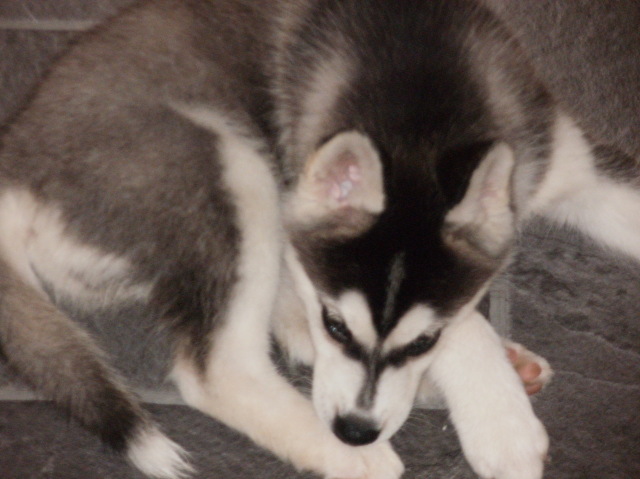 Bath Time
Question
Keiko
Hi we have a 14 week old Siberian named
Bath Time
Question
Keiko
Hi we have a 14 week old Siberian named
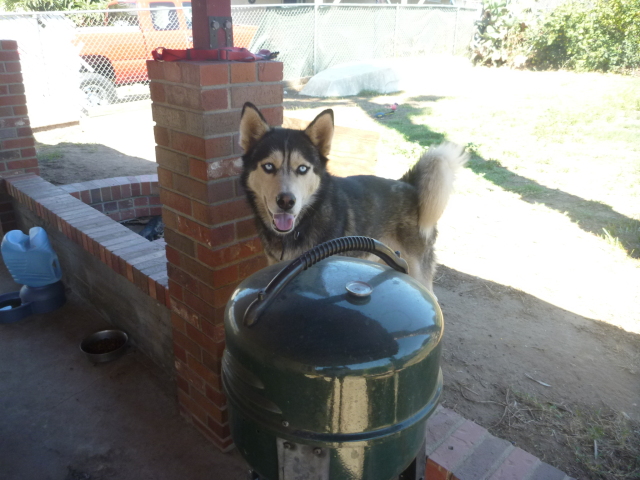 My husky and other dogs.
Question
Kona
My siberian husky, Kona, is 2years old an
My husky and other dogs.
Question
Kona
My siberian husky, Kona, is 2years old an
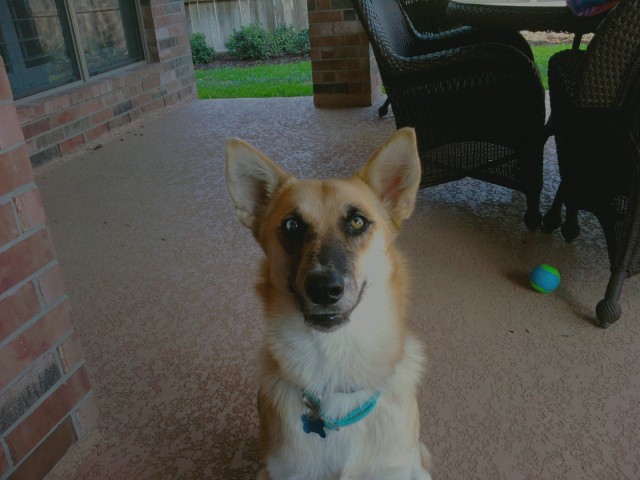 Wondering if my rescued husky mix is not a mix
Question
Ace
I adopted a 7 month old rescue abou
Wondering if my rescued husky mix is not a mix
Question
Ace
I adopted a 7 month old rescue abou
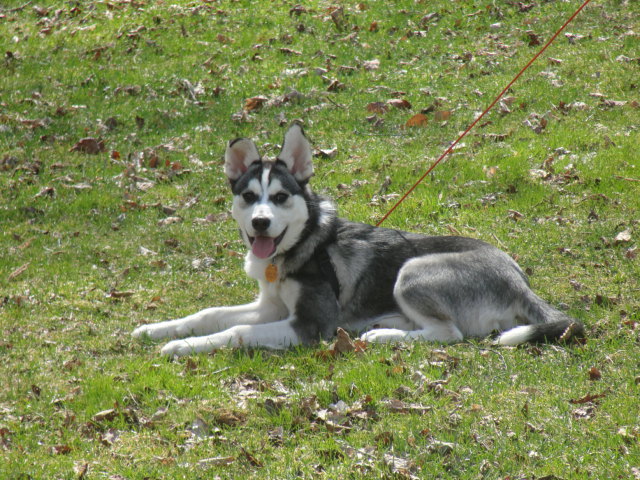 My 4 mo. old puppy
Question
Arkkan 4mo.old
I recently brought home my Sibe
My 4 mo. old puppy
Question
Arkkan 4mo.old
I recently brought home my Sibe
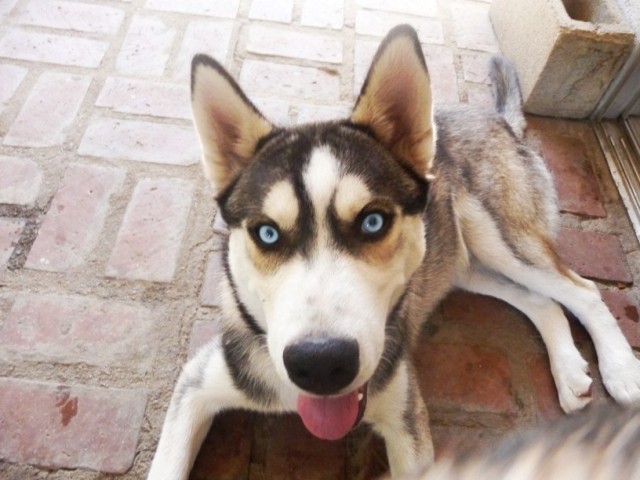 Husky Color
Question
Orion
Hi I have a beautiful 6 months old husky
Husky Color
Question
Orion
Hi I have a beautiful 6 months old husky